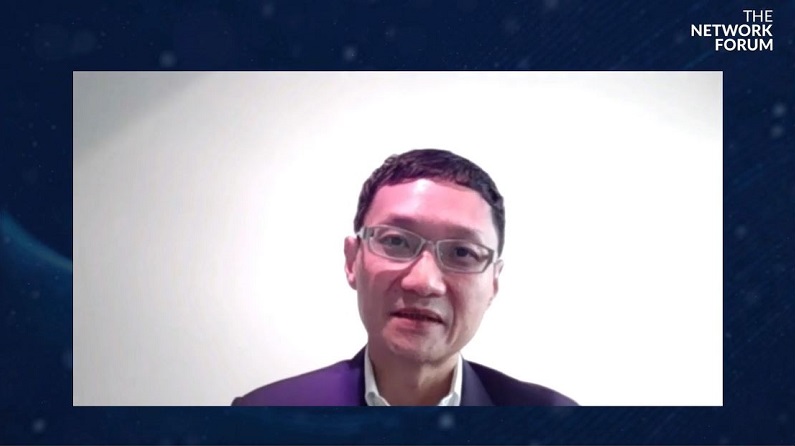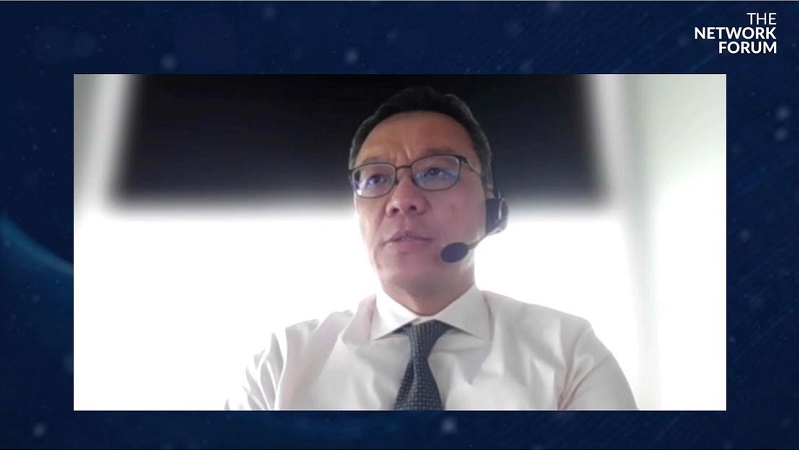16 December 2021
Digital asset appetite and alignment to ESG frameworks as well as pressure to reduce settlement cycles engaged panellists and virtual delegates at the 2021 Network Forum Asia meeting. flow reflects on how these themes are redefining global custody routines
MINUTES min read
The Asia-Pacific (APAC) securities services community is going through a period of transformative change, fuelled by the emergence of digital assets; increasing awareness about ESG (environment, social, governance); market liberalisation; and the implementation of post-trade reforms.
These were all resonant themes in the Network Forum (TNF) Asia Meeting – which took place virtually between 22 and 23 November. This article provides a summary of the main discussion points and Deutsche Bank spokespeople insights.
Digital assets find an APAC welcome
Boon-Hiong Chan, Head of Securities Market and Technology Advocacy, Securities Services at Deutsche Bank reports an increasing appetite in APAC for digital assets among institutional investors
“The market is deepening…the ecosystem is complex, rich, interdependent and very dynamic – there is a lot of momentum”
Boon-Hiong Chan, Head of Securities Market and Technology Advocacy, Securities Services at Deutsche Bank, explained that digital assets encapsulate instruments such as cryptocurrencies, stablecoins, Central Bank Digital Currencies (CBDCs), tokenised securities and non-fungible tokens (NFTs).1 Appetite in APAC markets for digital assets is certainly on the ascendency – with 71% of institutional investors in the region telling Fidelity that they had allocations to digital assets, rates that are well above that of Europe and the US.2
“The market is deepening…the ecosystem is complex, rich, interdependent and very dynamic – there is a lot of momentum,” reflected Chan.
What is driving so much activity in digital asset trading? Although extremely volatile, cryptocurrencies have been regarded a source of lucrative returns by a number of investors – while others see the burgeoning asset class as a useful inflationary hedge. Stablecoins are also becoming more popular. By way of background stablecoins are a type of crypto-currency but they are pegged to an external reference – principally an underlying asset such as a fiat currency or a commodity. However, one speaker warned there was a high probability stablecoins would suffer an existential crisis between now and 2025 in what could cause major reputational damage for the wider digital asset market. Ratings agency Fitch has already said that stablecoins could be a threat to short-term credit markets because of potential asset contagion risk.3
Tokenisation – the digitalisation and fractionalisation of tangible assets – has the potential to bring greater liquidity to private markets and mutual funds. A speaker said fractionalisation could help democratise investment as tokenised fund units would have a lower minimum subscription threshold thereby encouraging greater retail participation. Chan agreed, noting that tokenisation – and the fractionalisation that it can help facilitate – could be leveraged by asset managers enabling them to distribute funds directly to consumers instead of going through intermediary providers. CBDCs – or digital representations of fiat money – could be utilised to support securities settlements by using central bank cash to settle transactions in what might help generate major efficiencies.
Old meets new in the digital asset universe
As more investors integrate digital assets into their portfolios, custodians are developing solutions to support them. One speaker at TNF said that the growing participation of well-regulated and capitalised custodians in the digital asset market would provide a confidence boost to investors subject to the Investment Company Act of 1940 Rules, UCITS and the AIFMD (Alternative Investment Fund Managers Directive).
Despite this, Chan conceded custodians are likely to be limited in the number of crypto-assets they can support. “Not all banks will be able to custody all of the types of crypto-assets being traded by asset managers and hedge fund clients. A bank is only going to provide services to support the safest and most liquid crypto-assets yet a hedge fund – for example – might be trading up to 30 different crypto-assets. There is likely to be a mismatch in terms of what clients are trading and what banks can do,” explained Chan.
Moving forward, Chan highlighted that some crypto-exchanges could find themselves under pressure. He argued there would likely be further consolidation of them over the next three to five years as regulatory costs eat into their margins and funding dries up. Licensing rules in certain markets, he added, are also creating problems. “Licensing requirements mean that crypto-exchanges need scale if they are to survive. Some jurisdictions require crypto-exchanges to be registered and licensed locally if they are to onboard domestic clients and look after their assets. This is leading to a splintering up of liquidity,” he explained. Chan commented crypto-exchanges operating in some of the smaller or less liquid markets which are introducing licensing rules could struggle as a result.
ESG becomes mainstream in APAC
Tony Chao, Head of Greater China, Securities Services at Deutsche Bank discusses China’s pledge to achieve carbon neutrality by 2060
Although APAC trails well behind Europe on its adoption of environmental, social and governance (ESG) principles, momentum is building, particularly since COP26, according to Tony Chao, Head of Greater China, Securities Services at Deutsche Bank. Having pledged to reach peak carbon by 2030 and achieve net zero carbon emissions by 2060, Chao said China is committed to combating climate change.
Financial institutions are set to play a pivotal role in helping the country meet its net zero carbon ambitions through the provision of sustainable financing such as green bonds and sustainability linked loans. The green bond market in China is certainly gathering momentum with US$22bn of issuances recorded in the first half of 2021, making it the fourth largest issuance market by value after the US, Germany and France.4 In order to strengthen the market’s credibility, the authorities are introducing guidelines for green bond issuance, while Chao added that mandatory environmental disclosures have been imposed on listed companies.
While ESG investing is becoming more mainstream in APAC, the market does have some structural weaknesses. TNF speakers highlighted that data inconsistencies – a consequence of national regulators taking siloed approaches when overseeing the ESG market and the ongoing absence of any common industry-wide ESG data standards – are a recurrent problem. Some made the point that there are just too many ESG data standards and reporting templates circulating in the market and this is making life complicated for investors. Speakers warned this uncertainty around ESG data standards risked exacerbating greenwashing – whereby companies or asset managers provide misleading information about their environmental accomplishments to investors. A more joined-up approach towards ESG regulation and standards is needed if this nascent market is to keep on growing.
China continues to strengthen its capital markets
Having consolidated and simplified the QFII (Qualified Foreign Institutional Investor) and RQFII (Renminbi Qualified Foreign Institutional Investor) schemes into a single access channel – QFI – and expanded the number of products which investors can trade (i.e. National Equities Exchange and Quotations [NEEQ] securities; bond repos, asset backed securities, futures, options plus securities lending and margin financing), China continues to reform its domestic market. In particular, the country is establishing new rules around derivatives trading. Chao noted China’s landmark Futures Law – first proposed in May 2021 – has since been amended to include derivatives in its title, in what has been welcomed by global institutional investors. Chao added the proposal also appears to recognise the concept of netting. The rule changes are likely to spark further foreign interest in China.5
The launch of the Beijing Stock Exchange – the country’s third bourse after the Shanghai Stock Exchange and Shenzhen Stock Exchange – is also a positive development for the country, said Chao. Reports suggest the Beijing Stock Exchange will support trading in small to medium sized technology firms and will be based initially on the NEEQ Select, an alternative trading venue for SMEs6. These reports continue that 66 NEEQ Select firms with a market capitalisation of US$29bn will eventually be transferred to the Beijing Stock Exchange.7 The newly unveiled exchange could help investors obtain greater access to China A Shares – especially if the bourse becomes part of the Stock Connect programme, a linkage facilitating connectivity between the Hong Kong, Shenzhen and Shanghai stock exchanges. “The exchange could give investors greater access to a wider range of issuers,” said Chao.
Trade settlement compression takes shape in India
After markets were unsettled first by Covid-19 and then the subsequent meme trading volatility, the Depository Trust & Clearing Corporation (DTCC) – in coalition with industry bodies such as the Securities Industry and Financial Markets Association (SIFMA) and the Investment Company Institute (ICI) are pushing for a shortening of the rolling settlement cycle for US equities from T+2 to T+1. Proponents of T+1 argue that a shorter settlement cycle will bring about cost savings; reduce market and counter-party risk; and lower margin requirements, thereby freeing up surplus collateral and generating added liquidity. Other markets are following in the US’ footsteps. While the US is not expected to transition to T+1 until at least 2023, India will start phasing in a T+1 settlement cycle from February 25, 2022.8
Sriram Krishnan, Head, Securities Services, India and Sub-continent at Deutsche Bank, said SEBI (Securities and Exchange Board of India) had harboured ambitions for almost 20 years now about introducing a T+1 settlement cycle in the domestic equity market. Despite this, the imposition of T+1 in India has been fraught with difficulties. Krishnan noted SEBI’s initial plans for a T+1 rollout caused widespread alarm throughout the industry. This was because the rules previously allowed for India’s two stock exchanges – the BSE (Bombay Stock Exchange) and NSE (National Stock Exchange of India) – to introduce a T+1 cycle for any equity security on a voluntary basis. Had this been implemented, Krishnan said it could have resulted in the same security settling on T+1 on one exchange and T+2 on the other, creating operational complexity and unnecessary risk for market participants.
Furthermore, the rules were also originally supposed to take effect from January 1, 2022 – a deadline many argued was excessively tight. Critics of the rules also highlighted that a rushed compression of the settlement cycle would increase the likelihood of trade settlement failures and risked turning India into a pre-funding market, resulting in higher costs and risks for FPIs (foreign portfolio investors) and custodians.
These concerns were echoed by both FPIs and custodians – and India’s regulators have taken note. Accordingly, SEBI has since made significant changes to its T+1 rollout much to the relief of FPIs and their custodians. Instead of doing a ‘big bang’ implementation, Krishnan told TNF that aT+1 rolling settlement cycle will now be gradually phased in – applying initially only to the 100 bottom stocks from February 2022. Krishnan continued that the next bottom 500 stocks will then be required to settle on T+1 one month later, a process which will repeat itself until all of the country’s listed securities settle on T+1 “Most FPIs in India trade only the top 500 stocks meaning T+1 will not apply to them for another 10 to 12 months so they have a lot of time to prepare for these changes,” he said.
Upward activity trajectory
There is a flurry of activity happening in APAC, which is being propelled by a combination of market reform and new investment opportunities, said Anand Rengarajan, Global Head of Sales and Head of Asia-Pacific, Securities Services at Deutsche Bank. “We are observing a lot of technology changes in APAC – most notably in areas such as CBDCs and cryptocurrencies, along with developments in artificial intelligence. While China is obviously a huge investment opportunity, we are seeing increased IPO activity in markets such as India and Indonesia and we expect this trend to continue,” said Rengarajan.
The Network Forum Asia meeting took place virtually 22-23 November 2021
Sources
1 See also "Token power" at flow.db.com (June 2021)
2 See https://bit.ly/31UoW64 at fidelitydigitalassets.com (September 2021)
3 See https://bit.ly/3INcHZw at fitchratings.com (1 July 2021)
4 See https://bit.ly/3DTqz0R at fitchratings.com (28 October 2021)
5 See also "China’s capital markets path to growth" at flow.db.com (December 2021)
6 See https://bit.ly/3oUL8Wc at asianinvestor.net (7 November 2021)
7 See note 6
8 See also "Accelerated settlement – the move towards T+0" at flow.db.com (September 2021)
Securities services solutions Explore more
Find out more about our Securities services solutions
Stay up-to-date with
Sign-up flow newsbites
Choose your preferred banking topics and we will send you updated emails based on your selection
Sign-up Sign-upSubscribe Subscribe to our magazine
flow magazine is published annually and can be read online and delivered to your door in print
You might be interested in
SECURITIES SERVICES
Where next in the Gulf for securities services? Where next in the Gulf for securities services?
Having bounced back from Covid-19-related shocks, liquidity in local equity and bond markets is now the priority in the Middle East as GCC economies attract overseas investors following market infrastructure reforms. Securities services in the region are also navigating ESG and digital asset developments. flow reports on discussions at The Network Forum Virtual Middle East meeting
SECURITIES SERVICES
TNF Americas: Adapting to the new order TNF Americas: Adapting to the new order
As markets across the Americas slowly recover from the pandemic, leading experts from the securities services world – speaking at The Network Forum (TNF) Americas Conference – explored the changes sweeping through the industry. flow looks at some of the main discussion points arising from the event
SECURITIES SERVICES, TECHNOLOGY
What will be the shape of digital custody? What will be the shape of digital custody?
As investors build digital asset portfolios while they chase superior returns and diversification, custodian banks are building digital custody solutions to help them. Clarissa Dann reports on the risks and regulatory arms embracing these new asset classes





